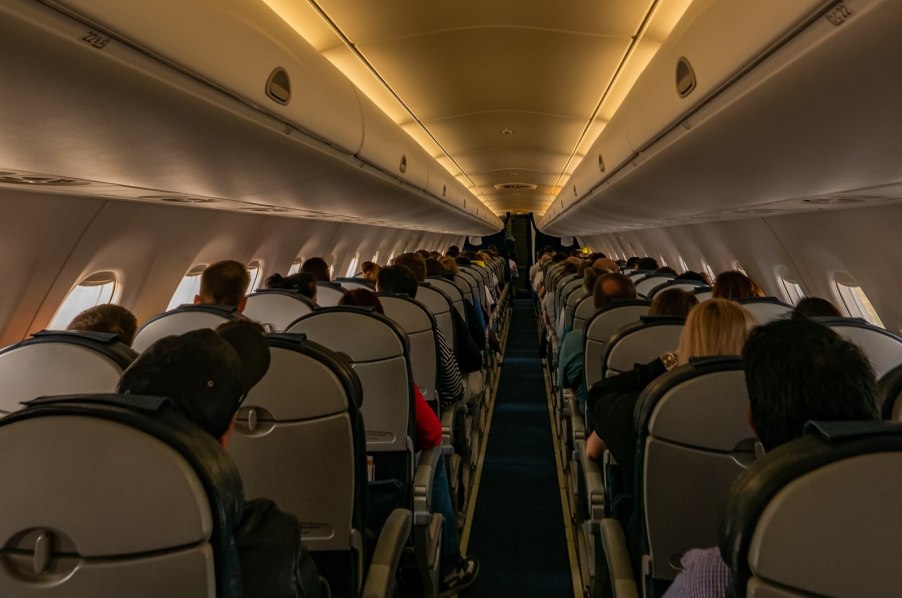
Passenger died on international flight, here’s what happened next
Picture this: You’re halfway through an international flight, and you nudge the person next to you to get up and use the bathroom. But they’re not stirring. At first, you think they’re just in a deep sleep—maybe knocked out by the inflight wine. Then reality hits: something’s very wrong. Your seatmate isn’t waking up.
As wild as it sounds, this isn’t fiction. It’s a real-life situation Condé Nast Traveler editor Lale Arikoglu witnessed firsthand. On a flight from New York to Istanbul, she watched as flight attendants rushed down the aisle to help a woman who wasn’t responding. “We all sat in silence, listening to the flight attendants yell at each other in Turkish as they tried to resuscitate the woman while we descended,” she later recalled. The intensity of the moment was palpable, with the entire cabin anxiously waiting for news.
What happens when a passenger dies on an airplane?
When a passenger dies mid-flight, the crew performs CPR for at least 30 minutes. If the flight is close to its destination, the body is covered and left in its seat. If the captain decides against diverting a longer flight, it’s discreetly moved. After landing, medical personnel confirm the death. Read on for a detailed timeline.
1. Immediate medical assistance
When a passenger shows signs of distress or stops responding, the cabin crew springs into action. They begin with CPR, and most commercial planes are equipped with Automated External Defibrillators (AEDs) to assist. According to Heather Poole, a flight attendant and author, “We have AEDs [automated external defibrillators] on board the planes to use if a passenger goes unconscious and stops breathing, and we’re all trained to do CPR.” The crew will also page for a doctor or medical professional. If none is available, they contact ground-based services like MedLink for assistance from doctors on the ground.
2. ‘Presumed dead’
International guidelines recommend continuing CPR for a minimum of 30 minutes unless turbulence or other flight conditions make it impossible. Dr. Paulo Alves clarified, “Crew members cannot declare if a person has died or not,” as that responsibility lies with a licensed medical professional. The IATA (International Air Transport Association) guidelines state that, “If CPR has been continued for 30 minutes or longer with no signs of life…the person may be presumed dead, and resuscitation ceased.”
3. The difficult decision to divert
After CPR, the pilot and airline operations must decide whether to divert the plane. Diverting an international flight to a third country could complicate the repatriation of the body and delay passengers further. In the case of a passenger dying on a long-haul flight from India to Canada, the family sued the airline for not diverting, which is another complication airlines must weigh. Dr. Arnold Seid added, “There is no mandate to alter the flight path in the event of a death in flight. The pilot must follow certain notification regulations, depending on the country and jurisdiction of the destination airport, as well as company protocol.”
4. Handling the body
If the flight is nearing its destination, the body will often be left in its seat, covered with a blanket, and buckled in for safety. The crew will attempt to move nearby passengers, if possible, to avoid distress. If the flight is longer, they must lay the body flat before rigor mortis sets in. They discreetly use a wheelchair to move the body to a more private area, such as a curtained first-class seat or crew rest area. As Jay Robert, a former flight attendant, explained, “If the pilots decided to continue to our destination, we would have to prepare the body for storage.” On some international flights, airlines even carry a body bag, but as Robert said, “We were trained to zip it only to the neck, as the person wouldn’t be officially declared dead until after the plane landed.”
5. After Landing
Upon landing, the plane is met by medical personnel and local authorities, who officially confirm the death and handle necessary paperwork. If the plane only stops briefly to hand the body over to authorities, passengers may be instructed to remain seated while ground crew removes the body. If most passengers disembark, the family or traveling companions may stay with the deceased until the authorities arrive. According to IATA guidelines, “Disembark other passengers first and make sure the family members stay with the body.”
6. The lasting impact
After handling such an event, flight attendants often face emotional challenges. “A medical emergency is very stressful on crew,” said Heather Poole. Airlines offer mental health resources like counseling and peer support for flight crews following such traumatic events.
No one expects to face death during a flight, but as rare as it is, it does happen. The moment Lale Arikoglu witnessed on her flight is a powerful reminder of life’s unpredictability. “Even years later, I think about that woman a lot,” she reflected. Though the system is designed to handle such tragedies smoothly, for those involved, the memory lingers like a permanent jet trail.



